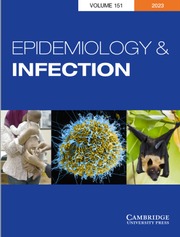Article contents
A Study of the Bacillus Mucosus Capsulatus Group
Published online by Cambridge University Press: 15 May 2009
Extract
The group of organisms included in the term B. mucosus capsulatus has continued to intrigue bacteriologists for more than thirty years, mainly on account of the problems of academic interest which arise when any attempt is made to define the characters of the group as a whole or to classify its members into types. Proof that such problems still exist is to be found in current text-books in which certain discrepancies occur regarding the biochemical reactions ascribed to the various members. There is also uncertainty as to the inclusion of B. lactis aerogenes in the group (Topley and Wilson, 1929; Wilson, 1929). Much of the difficulty arose from the fact that Friedländer's bacillus, one of the first members of the group to be isolated (1883), was studied from a morphological standpoint, while Escherich who described B. lactis aerogenes in 1886 stressed its biological similarity to B. coli. A chasm was thus created between B. lactis aerogenes and Friedländer's bacillus which has not been bridged to the present day, although these organisms must always have resembled, more than they differed from, each other; e.g. Bergey (1929) classifies B. lactis aerogenes with coliform types under Bacterieae and places Friedländer's bacillus in the tribe Klebsielleae Trevisan, i.e. encapsulated Gram negative organisms encountered principally in the respiratory tract, whose fermentation reactions are not given in full. Organisms morphologically similar to Friedländer's bacillus were found to be widely distributed, and in 1896 Fricke named the group B. mucosus capsulatus. There is still little criticism to be made of his general description to the effect that the members were Gram-negative, possessed capsules, showed marked pleomorphism and did not form spores; they grew on a variety of media in a profuse slimy layer, and in gelatin stabs they did not liquefy, but showed the so-called “nail” growth; in addition to this, most of the bacteria classed under this head formed a moderate amount of indole and fermented carbohydrates in solution with production of acid and gas. In an attempt to type members of this group Perkins (1904) admitted that the current knowledge of technique had been almost exhausted in the effort to separate one member from another, but on the basis of certain biochemical differences he was able to distinguish three classes, of which the first was the largest:
Information
- Type
- Research Article
- Information
- Copyright
- Copyright © Cambridge University Press 1932
References
REFERENCES
- 15
- Cited by

